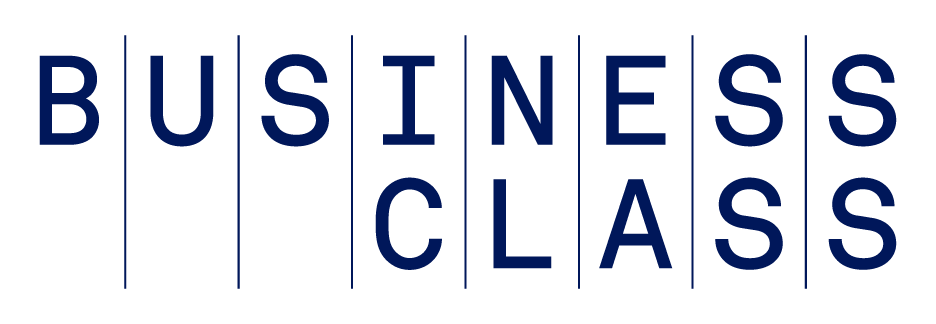Modern businesses face an increasingly important choice: Is it better to keep things simple and affordable with a single-supplier sourcing model, or is it prudent to hedge against potential sourcing interruptions by working with multiple suppliers?
The versatility of a diversified procurement operation can make it seem like the safer option, but there is no one-size-fits-all approach to supply chain sourcing. Managing relationships with multiple suppliers can be complex and challenging, whereas single-supplier sourcing can be rigid and expose a company to external risks. Businesses must find their own balance between supply chain manageability and flexibility to best overcome the unique challenges they may face.
Single Sourcing vs. Multiple Supplier Strategy
Supply chains can be disrupted for countless reasons, from natural disasters and changes in global trade policies to transportation slowdowns and unexpected spikes in demand. An overreliance on a single link in the supply chain can, therefore, lead to major losses if a disturbance occurs. Given these potential challenges, it’s no wonder that 86% of 1,500 global decision-makers surveyed in Interos’ 2022 Annual Global Supply Chain Report felt that their organizations had too many suppliers concentrated in one area of the world.
But not every business can justify the cost and resources required to manage the complexity of sourcing from multiple vendors, and managing a regionally diverse supplier network can bring additional complications, such as variations in quality standards.
Some companies, especially smaller ones, often benefit from a more streamlined, single-sourcing model.
Still, there are costs and benefits associated with both single and multiple supplier sourcing strategies. Carefully weighing the options can help business leaders make better informed decisions when designing and optimizing their approach to supply chain management.
The Pros and Cons of Single-Supplier Sourcing
Some businesses prefer a simple procurement operation. These companies are often small or midsize and may lack the staff or resources to manage multiple suppliers. Or, they might produce few products at a low volume. In such cases, relying on a single supplier may be the optimal choice. Yet, despite the simplicity, there are still risks to consider. Here are some advantages and disadvantages of single-supplier sourcing.
Benefits of Single-Supplier Sourcing:
- Streamlined operations. It’s typically easier to manage a single source than it is to balance the needs and capabilities of multiple suppliers. A single source also requires fewer resources and less time, especially when it comes to managing processes that tend to vary from vendor to vendor and may require specific paperwork, like creating purchase orders and dealing with accounts payable.
- Better supplier relationships. Businesses that have exclusive, close relationships with suppliers may be more likely to receive preferential credit terms, priority deliveries in times of need, bulk pricing discounts, and other perks.
- Upheld standards. Single sourcing gives businesses more control over finding suppliers that align with their company values, such as ethical sourcing of materials or similar labor standards.
- More consistent quality. With only one supplier, a business can be confident that the quality of the materials it receives will be consistent, assuming the supplier has rigorous quality control checks of its own. If quality inconsistencies occur, the business can communicate directly to its single vendor, rather than having to trace defective supplies to their original source before being able to take action.
Risks of Single-Supplier Sourcing:
- Dependency can be risky. If a single supplier experiences a disruption or shuts down completely, its customers will likely have to scramble to find a new source as quickly as possible. And if that supplier leaves many customers high and dry, landing a new supplier contract could include long delays and/or high prices due to increased demand.
- The domino effect. Changes in prices and order fulfillment times from a single supplier can ripple throughout the supply chain, shrinking the bottom line and impacting customer satisfaction.
- Less flexibility. If customer demand changes, a single supplier may not be able to provide new materials quickly or adapt to changing business strategies.
- Missed opportunities. Businesses that rely on a single supplier may miss out on opportunities to get lower prices, better quality products, or more innovative options from alternative sources.
The Pros and Cons of Multiple Supplier Sourcing
Supply chain disruptions and materials scarcity have become major concerns for businesses hoping to develop risk mitigation strategies and business continuity plans. In the 2023 Hubs Supply Chain Resilience Report, raw material shortages were the top supply chain disruption, experienced by 61% of the 334 in-network manufacturing suppliers surveyed.
With high consumer pressure to deliver goods quickly, it’s critical that businesses preserve a steady supply of materials. This is often achieved through maintaining multiple suppliers. There are several other advantages of a multiple supplier sourcing strategy, as well as some disadvantages that can’t be ignored. Here are a few examples of each.
Benefits of Multiple Supplier Sourcing:
- Increased resiliency. Maintaining multiple suppliers reduces the risk of disruption and supports supply chain continuity. For example, if one supplier is unable to deliver raw materials due to a shortage, the business can boost orders with a different supplier to compensate.
- Healthy competition. Businesses can leverage their suppliers’ terms against each other. For example, if a business works with two suppliers and one lowers prices, the business can negotiate with the other supplier in attempt to either match the price or get additional perks that justify the higher price, such as better credit terms or a shortened lead time.
- Greater innovation. Collaborating with multiple suppliers can open up new or innovative opportunities, such as taking advantage of technological advancements, uncovering ways to solve problems, and providing insights into upcoming supply chain challenges.
- More delivery flexibility. Different suppliers often use different methods to deliver materials and can, therefore, present customers with more flexible delivery options, such as varied delivery times or additional freight methods.
Risks of Multiple Supplier Sourcing:
- Added complexity. Managing multiple suppliers can be challenging. The inherent complexity can lead to problems with supply chain visibility, as well as to higher administrative costs associated with managing purchase orders, logistics, and accounts payable.
- Potentially higher costs. Requisitioning smaller orders from each supplier, as opposed to making a bigger bulk order from a single supplier, can raise the cost per item, which can either reduce profit margins or hurt customer satisfaction, if the costs are passed onto consumers.
- Possible quality control challenges. It can be hard to maintain quality standards across multiple suppliers. This can lead to inconsistent quality of materials. If a more involved quality control process is required, lead times – as well as materials costs – may increase in tandem.
- Can be harder to build relationships. Working with multiple suppliers forces staff to divide their focus among multiple parties, making it a challenge to foster and sustain trust. This division of attention can also hamper communication and conflict resolution, which may add tension to a business relationship.
Techniques for Managing Multiple Suppliers
Simply contracting with multiple suppliers is not enough to mitigate the risks of supply chain disruptions – but it can serve as the first step in a series of operational improvements. Supply chain risks can be alleviated through regular quality checks and supplier performance reviews that objectively evaluate key criteria, such as product quality, delivery speed, return rates, defects, and customer complaints.
For example, some businesses keep simple “supplier scorecards” to track vendor performance and identify areas needing improvement. These evaluations help decision-makers when changes must be made to the procurement process – say, expanding or shrinking a vendor network or replacing underperforming suppliers with ones better suited to help the business meet its short- and long-term goals. To more efficiently manage and track the performance of multiplier suppliers, businesses might want to invest in supply chain management software that automatically tracks performance, handles purchase orders, and simplifies payments.
Even when the supply chain is running smoothly, supplier evaluations should be continually conducted and analyzed to disclose new strategies and best practices that can be implemented as they arise to help businesses remain competitive.
Comprehensive supplier performance metrics can also be valuable when renegotiating contracts. For example, data can indicate areas where businesses can improve the way they communicate their needs and expectations to suppliers.
Furthermore, evidence-based collaboration can lead to more favorable terms – or help business leaders prioritize specific needs when exploring alternative sourcing options.
Figuring Out Your Supply Chain Strategy
Developing a supply chain strategy requires detailed planning and deliberate implementation. When choosing between a single supplier or a larger vendor network, decision-makers should first consider their goals in the context of their overall business model. A manufacturer operating on razor-thin margins may need to prioritize accepting potential bulk discounts offered by a single supplier over reliable and speedy deliveries from multiple sources, for example. On the other hand, an international e-commerce company may find that higher material costs are a worthwhile trade-off for maintaining global business continuity during high-demand periods.
Businesses should also consider the needs of their customers when planning their supply chain. Unlike a mass-market-goods manufacturer, a custom-furniture maker that emphasizes its affiliation with a unique, high-quality wood supplier in its marketing materials may not have customers with high expectations for rapid order fulfillment. In this case, a single supplier may be the best fit for the niche furniture maker, while the mass market manufacturer will likely require a multiple sourcing model.
Businesses should cater their supply chain strategies to what will best serve their products and their customers, ultimately resulting in greater customer satisfaction and a stronger competitive edge.
The Bottom Line
Businesses of any size may struggle to choose between the simplicity of a single-supplier model and the flexibility of contracting with multiple vendors when planning their supply chain strategy. There are advantages and disadvantages to both approaches, so decision-makers must carefully weigh their business needs – as well as their customers’ needs and expectations – to ensure that they make a well-informed choice. By continually reassessing and improving their supply chain processes, businesses can continue to deliver reliable and high-quality goods and services to their customers, even in the face of supply chain disruptions.
A version of this article was originally published on December 07, 2018.
Photo: Getty Images






